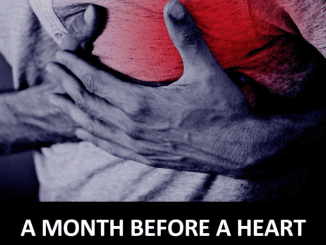Constipation is an uncomfortable and frustrating experience that most people face at some point in their lives. Whether it’s due to diet, stress, or other factors, not being able to go when you need to can turn into a real problem. Fortunately, a few doctors on TikTok have suggested an unusual but potentially effective way to help ease this common issue. Let’s dive into what they recommend and why it might just work.
The Constipation Conundrum

Constipation is more than just an inconvenience; it can lead to health complications if left untreated. Issues like hemorrhoids, anal fissures, and even an increased risk of colorectal cancer can arise from chronic constipation. Dr. Karan Raj, a well-known NHS surgeon, has taken to TikTok to share some valuable insights on how a simple change in how you sit on the toilet might help you pass stools more easily.
A New Way to Sit
According to Dr. Karan Raj, the key to relieving constipation could be as simple as changing your posture on the toilet. He suggests sitting with one leg over the other, mimicking a squatting position. This posture alters the angle of the rectum and relaxes the puborectalis muscle, which is responsible for creating a kink in the rectum to maintain continence. By reducing this kink, you can give your stools a more direct path, making it easier to go.
The Science Behind It
Dr. Raj explains that this sitting position not only helps align your digestive tract for easier passage but also increases intra-abdominal pressure, which helps push the stool out more effectively. He humorously compares this process to turning yourself into a “frozen yogurt dispenser,” a relatable analogy that underscores how effective this technique can be.
Another Doctor’s Take
Dr. Daria Sadovskaya, a nephrologist from Singapore, shares a similar technique on her TikTok account. She recommends placing one foot on the opposite knee while sitting and twisting your torso toward your raised leg. This position acts like a form of self-massage for your intestines, helping to move stool along more quickly and with less strain.
Why This Works
Both Dr. Raj and Dr. Sadovskaya agree that the traditional sitting position on the toilet is not the most effective for bowel movements. The sitting posture most of us use tends to keep the puborectalis muscle slightly contracted, which can make it harder to pass stool. By adjusting your position to mimic squatting or incorporating a twist, you can alleviate some of the strain that comes with constipation. This method can be especially helpful for those who experience light constipation and want to avoid over-the-counter remedies.
When to See a Doctor

While these tips can provide relief for occasional constipation, they are not a cure-all. If you find yourself consistently struggling with constipation, it may be time to consult a healthcare provider. Chronic constipation can be a symptom of underlying health issues that need to be addressed with more than just posture adjustments. Conditions like irritable bowel syndrome (IBS), thyroid disorders, or even stress can contribute to persistent constipation, requiring a more comprehensive approach to treatment.
Incorporating Other Remedies
In addition to these posture tips, it’s important to adopt a holistic approach to managing constipation. A high-fiber diet rich in fruits, vegetables, and whole grains can make a significant difference. Fiber helps to bulk up stools and move them through the digestive tract more easily. Staying hydrated is equally important, as water helps to soften stool, making it easier to pass. Regular exercise also promotes healthy digestion by stimulating the muscles in the intestines.
If you prefer natural remedies, consider incorporating foods like prunes, which are known for their laxative effects due to high sorbitol content. Herbal teas, particularly those containing senna or peppermint, can also help stimulate bowel movements. However, these should be used sparingly to avoid dependency.
Final Thoughts

Trying out these new sitting positions might feel a bit awkward at first, but according to these medical professionals, they could make a noticeable difference in your constipation relief. Whether you choose to mimic a squatting position or adopt the cross-legged twist, these simple changes could be just what you need to get things moving again. Remember, while these techniques are helpful, they are most effective when combined with a healthy diet, regular exercise, and adequate hydration.
Constipation is a common issue, but with the right tools and knowledge, it doesn’t have to disrupt your life. Next time you find yourself struggling, consider giving these tips a try. And, as always, if your symptoms persist, don’t hesitate to reach out to a healthcare provider for further guidance. Here’s to a more comfortable and regular future!


